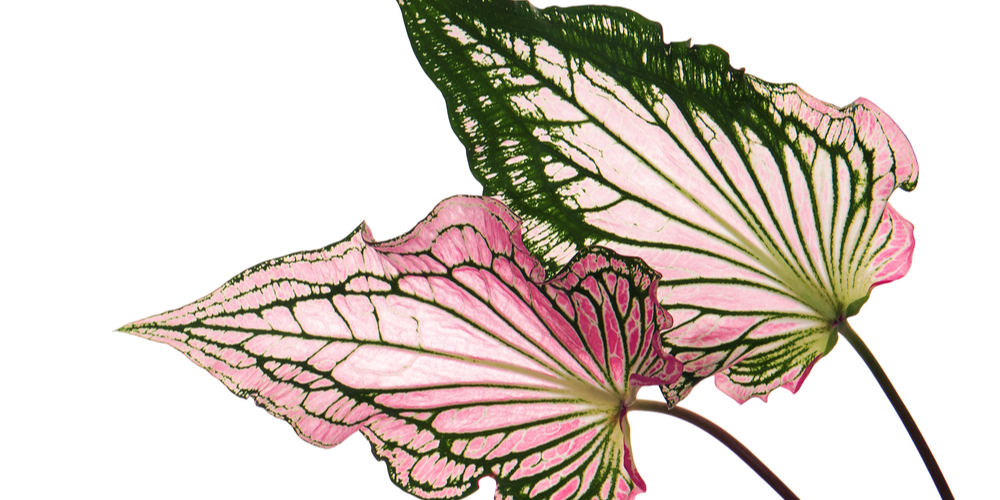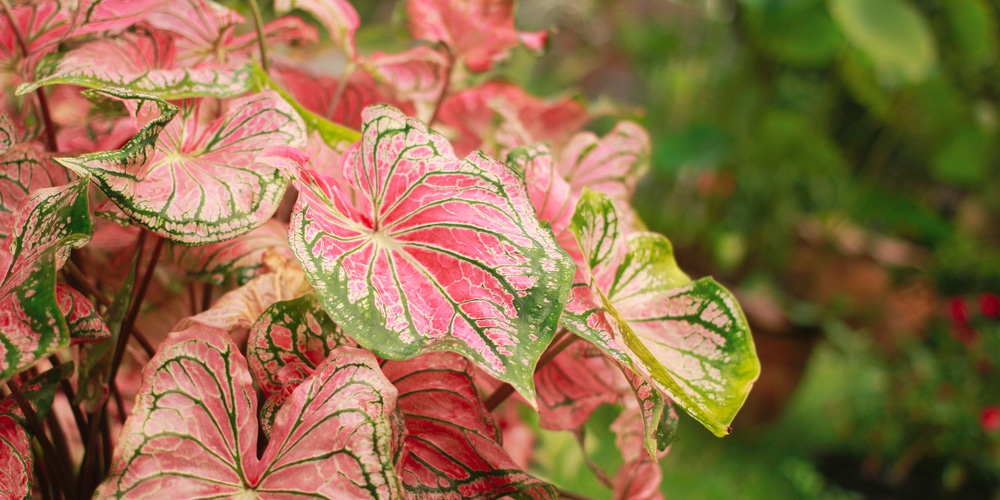Caladium is a flowering plant that belongs in the family Araceae. Caladium is commonly known as elephant ear and has lush multicolored leaves (many of which are bigger than a person’s hand). These foliage plants have become quite popular, with many farmers planting them in shady or semi-shady gardens.
Each of their leaves has a complex pattern that looks like it’s been hand-painted with red, pink, white, and green color combinations. Although caladium thrives in hot and humid weather, they can also be grown as summer bulbs in temperate climates or as houseplants, provided they have the right conditions.
Caladium can produce colorful displays that rival flowering plants if they are pampered and cared for attentively. This article is meant to provide you with information on when to plant caladiums in Texas. Read on and find more information on when to plant and how to care for Caladiums in Texas.
Description
Common names: Angel wings, Caladium, Elephant ears (shared with other species).
Botanical name: Caladium bicolor, Caladium x hortulanum (synonym)
Plant type: Caladium is a tuberous tropical perennial
Zones: The plant grows well in zones 9 – 11 (encompassing Texas, Florida, Louisiana, California, etc.) It can also be grown as a house plant in other locations.
Height: Grows to 18-24 inches. You can also get dwarf forms that are 12 inches or shorter.
Type of leaves:
Strap-leaf- These varieties have narrow, lance-shaped, or arrow-shaped leaves. They are more compact and tolerant to the cold.
Fancy-leaf- These varieties have heart-shaped leaves that can grow to be more than one foot long.
Caution: Caladium is poisonous if ingested and sap from its leaves and stem causes minor skin irritation. Thus, you must keep the plant out of reach of children and pets.
When to plant caladium in Texas
Planting date
One of the most critical things you could do when planting caladiums is planting them at the perfect time. However, this information varies depending on where you live. If you live in Texas (or areas that belong in zones 9 to 11), then the perfect time to plant caladiums is on March 15.
However, you have to note that this is only a general guideline that you can use to get prepared for the actual planting date. If you notice that winter seems to linger longer than expected and the soil temperature is too low, then you can wait a bit longer until the temperatures are more favorable.
Temperature
You’ll have to wait until the temperatures reach 70˚F to 85˚F during the day and above 60˚F at night. Remember that it’s always safer to be a little late than a little early. If you live in northern parts of the country, then you are better off planting your caladiums in containers since the soil warms up much faster compared to garden soil.
You can transfer them to your garden later on when the weather is more favorable; however, you’ll have to ensure that they are properly acclimated to outdoor environments before doing this.
If you live in USDA hardiness zone 9 to 11 (i.e., those that live in texas), you can leave the caladium bulbs in the soi throughout the year. They can survive the winter during this period once they are established. Those that live in zones eight and below will have to dig them up and store them during the winter.
Watering and fertilizer
You’ll have to provide the plant with enough moisture while they grow. Allowing the soil to dry could cause its leaves to turn yellow and drop. You can apply a layer of mulch to help retain some moisture in the soil. Caladiums don’t require lots of fertilizer. You can provide them with controlled-release fertilizer that’s one-quarter as strong as you would use in regular flowering plants.
Propagation
You’ll need to divide the tubes and cut them into small pieces that have (at least) one eye or knob through which they’ll grow. You should allow the pieces to dry for one full day before planting them in the garden or container.
When to Plant Caladiums in Texas: Conclusion
As mentioned before, caladiums are a wonderful addition to your garden or home. They look beautiful and are best placed in dark corners or used to create a dramatic backdrop for other plants that love the shade.
You may also like: When to Fertilize Your Lawn in Texas

